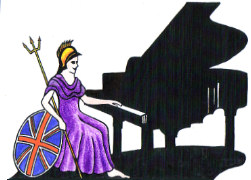Teachers, Accompanists and Piano Entertainers in the UK

UK Piano Page

142 Edgware Road
Marble Arch, London W2 2DZ
England
Jaques Samuel Pianos has been providing pianos
137A Grays Inn Road .
Bloomsbury, London WC1X 8TU
England
Peregrine's Pianos is the exclusive dealer in
111-113 Ewell Road
Surbiton, London KT6 6AL
England
We are one of the largest retailers of both new
Under the City Hall
13 Paragon Street
Hull, East Riding of Yorkshire HU1 3NA
England
Gough & Davy was established as a Piano retailer
878 Carmarthen Road
Swansea, Swansea SA5 8HR
Wales/Cymru
Discover the special nature of a visit to our
Music Festival for performers and guests Our 10th
18-06-2022 01:30PM
The Morecambe Bay Piano Group was set up to extend
11-12-2021 02:00PM
The Morecambe Bay Piano Group was set up to extend
08-01-2022 02:00PM
The Morecambe Bay Piano Group was set up to extend
12-02-2022 02:00PM